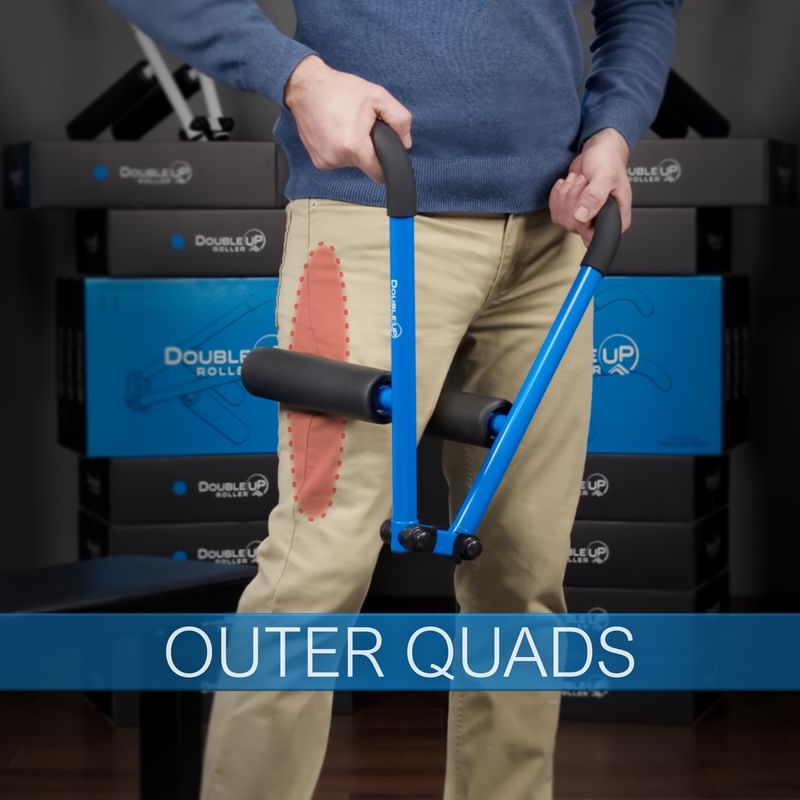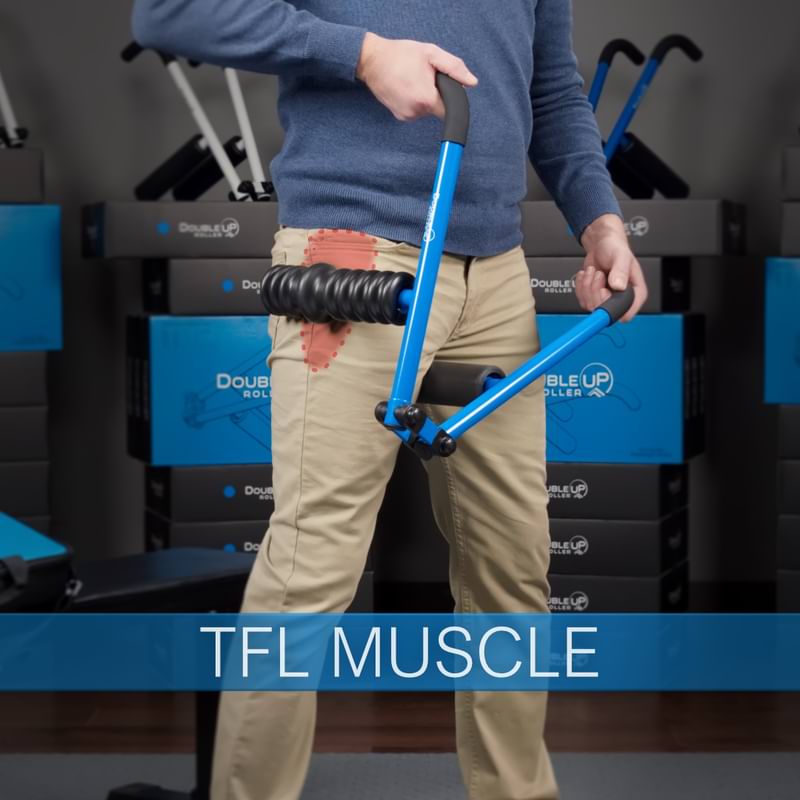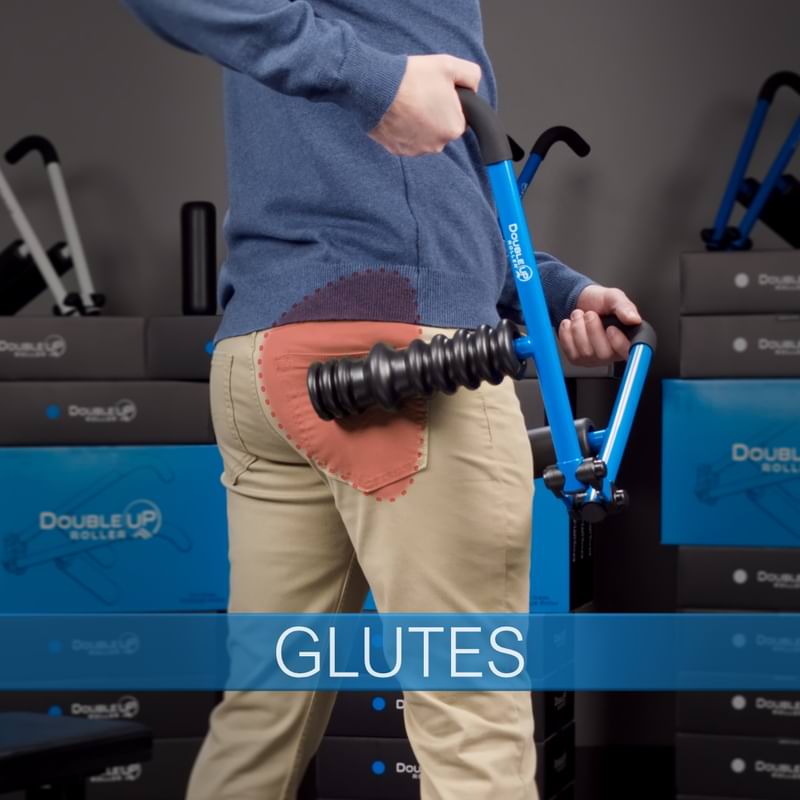Living with sciatica is anything but fun. In fact, sciatica is one of the most common and frustrating problems to live with, causing adults of all ages to miss work and compromise on their exercise routines.
Usually caused by irritation of the sciatic nerve, sciatica is a term that describes different symptoms in the leg such as pain, numbness, and tingling. It might not sound that bad, but sciatica can seriously affect your daily life and prevent you from enjoying exercise.
Which begs the question, are there simple at-home strategies that are helpful for sciatica?
Keep reading to learn more about sciatica foam rolling and how it can help your recovery. We’ll provide some important tips and tricks to get you started on the right foot.
Sciatica can be caused by a number of different factors, and each cause has its own implications for an appropriate treatment plan.
Finding the root cause of your sciatica is the most important part of your recovery. That’s because with a good understanding of the root cause, you can get the treatment that you need faster and see results earlier.
In some cases, finding the root cause of your sciatica might require imaging. This is especially true for nerve root irritation, where imaging such as an MRI can be used to show problems like a disc bulge or herniation.
The symptoms of sciatica can vary slightly from person to person, but there are a few consistent themes to watch out for:
It’s clear that there are plenty of symptoms and triggers to be aware of with sciatica. But how do you relieve your symptoms?
Foam rollers have been a favorite tool for getting relief from sciatica for many people, but does sciatica foam rolling actually work?
The short answer is, yes, it can help. This is because sciatica is often caused by muscle tension in your buttock and hip that causes irritation of your sciatic nerve. By foam rolling the muscles of your buttock and hip, you can bring down the tension and improve your symptoms of sciatica.
However, not all sciatica is caused by muscle tension. As mentioned earlier, sometimes sciatica is caused by a nerve root problem in your lower back. When this is the case, foam rolling might help alleviate some symptoms of sciatica, but it won’t address the root cause.
While foam rollers have the ability to help your sciatica, they also have the potential to make it worse if performed incorrectly. To help you get the best results possible with your foam rolling, here are a few important tips to remember:
First, don’t roll directly over the area where your sciatic nerve is compressed (most sensitive). Instead, work around the area and focus on relaxing into the roller - it should feel helpful!
Next, keep the intensity low and slowly work your way up. It might be tempting to push yourself during your first session, but this can lead to pain afterwards. Give your body time to respond and adjust based on how you feel the next day.
Note: While many online videos might recommend pushing yourself through pain to break up adhesions or scar tissue, this doesn’t apply to sciatica and it simply isn’t recommended because it can cause more harm than good. Instead, focus on reaching the limits of your discomfort without causing significant amounts of pain - this will help you get better results and recover more easily.
Finally, use a roller that helps you control and adjust pressure on the fly. This is one of the most important factors when foam rolling for sciatica because the area surrounding your sciatic nerve can be very sensitive. Unfortunately, classic foam rollers don’t allow for pressure to be adjusted very easily.
From tubes, to balls, to spikes, there are plenty of massage tool options to choose from. But which is the best for you and your sciatica?
While traditional foam rollers have their place, new and innovative tools offer more comfort and better results for those dealing with sciatica. One of the most promising tools for sciatica foam rolling is DoubleUP Roller.
Put simply, DoubleUP Roller is a great option for sciatica because it’s designed to help you reach the muscles surrounding your sciatic nerve with more control and precision. By using thinner rollers along with the unique offset handles for improved pressure control, you can finally roll out more elusive areas like the side of your hip and your upper hamstrings in a way that will actually get you results. This makes a big difference for sciatica, because most traditional rollers are too big and bulky to get useful pressure on the muscles around your sciatic nerve.
Even better, these benefits also mean avoiding common issues with traditional foam rollers like having to put your whole body weight on the roller, or feeling like you’re limited to rolling out only a few areas of your leg. The result is a more comfortable and more effective experience that leads to faster relief of sciatica symptoms.
Thanks to the DoubleUP Roller’s specialized design, you can spend less energy trying to overcome the awkward positioning of a standard foam roller and enjoy an easier recovery process. This can be invaluable if you’re struggling with lower back pain or have trouble working around the shape of your body with a traditional roller.
Using DoubleUP Roller to roll out your glutes, outer thigh (vastus lateralis), TFL (tensor fascia latae), hamstrings, and calves is easy to do, and can provide relief from sciatica symptoms. Here are a few tips to get started on the right foot with your sciatica foam rolling.
Video demonstrates massage techniques and recommended roller pairings to help loosen tight muscles for sciatica symptom relief.
Standing upright and holding the handles in both hands, open the DoubleUP frame and hold it in front of you, so one roller is on the outside of your thigh (outer quadricep / vastus lateralis), and the opposite roller is on the inside of your thigh. Gently squeeze both handles and slowly move the roller up and down, gradually applying more pressure as needed.
The matching pair of Medium rollers is an ideal choice for this technique. Although if you feel that you need more intensity or more cushioning on either side, you use one of the firm quick-change rollers (Bumpy or Ribbed) or use our thick Soft roller for cushioning.
Standing upright and holding the handles in both hands, open the DoubleUP frame and position it so that the outside roller is along the upper outer area of your hip (just above the bony bump near the top), and the opposite roller is on the inside of your leg, as high as possible in your groin area. Gently squeeze both handles and slowly move the outer roller up and down along the TFL muscle, applying more pressure as needed. The inside roller will remain mostly stationary and act as a pivot. You will be tilting the frame as you roll with the outer roller using this technique.
Standing upright and holding the handles in both hands, open the DoubleUP frame and rotate it to the side so the front roller is along the very front of your thigh and the back roller is on the very back of your thigh. Gently squeeze both handles and slowly move the roller up and down along your hamstring muscles, applying more pressure as needed.
It is helpful to rotate the rollers slightly to target your inner or outer hamstring muscle more specifically. You can also change the roller pairings if you find that you desire either more intensity or more cushioning on either side.
Position DoubleUP so the back roller is across your glute muscle and the front roller is on the opposite side contacting your hip flexors. Tilt the front handle forward to allow the rear handle and roller to rise up to the desired target area on your glutes. Gently squeeze both handles and slowly move only the rear roller up and down along the glutes, applying more pressure as needed. Depending on your flexibility, you may find it easier to apply pressure on the down strokes rather than the up strokes.
DoubleUP’s firm Ribbed roller option is ideal for rolling the glutes, because the tall rib can dig into the subcutaneous fat to reach the muscle tissue. Load the Ribbed roller on the axle with the tall rib closest to the quick-release button. This will provide maximum reach to position the rib in the desired areas of your glutes. Use a smooth Medium roller as the opposite roller that rests against your hip flexors. If you require extra cushioning, you can load a Soft roller instead.
Calf rolling can be done while either standing or sitting, depending on your preference. Position one roller along the front of your shin on the tibialis anterior muscle that is next to your shin bone. The opposite roller will be on the meaty part of your calf muscles. Gently squeeze both handles and slowly move the roller up and down along your calf muscles, applying more pressure as needed. If you have discomfort in your shin area, you can install the Soft roller to provide extra cushioning. And if you need extra intensity on the calf muscles, you can select either the firm Bumpy or firm Ribbed roller to achieve the desired muscle release.
It can take time to see results with your sciatica foam rolling, so make sure to be consistent and spend a few minutes rolling out your hip, thigh, and leg every day that you can.
Sciatica can be challenging to live with, but finding the root cause of your sciatica and building a plan to address it with the proper therapies can get you great results. On top of following essential tips and tricks to make the most of your sciatica foam rolling, innovative tools like DoubleUP Roller can help you alleviate your symptoms so you can get back to your favorite activities easier than before.
Remember, your recovery is unique to you and deserves the best care available. Always listen to your body and make sure to ask your physical therapist for guidance!




